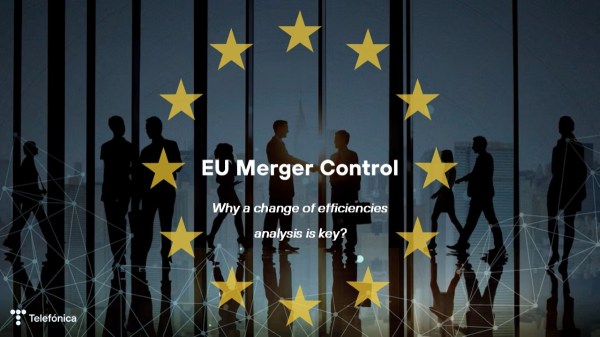The radio spectrum availability is of concern to regulators, industry and consumers. Spectrum is a valuable resource that has become a scarce commodity in many countries including the United States. The good news is that, while spectrum is scarce, it is a renewable public resource, which means that reallocation is possible. Since the mobile revolution, an exponential demand for the valuable resource has brought concerns about the spectrum deficit that will be revealed over the next several years. According to a recent study conducted by the Pew Research Center, 91 percent of American adults have a cell phone and 56 percent of phone owners said that their phone is a Smartphone. Furthermore, Cisco Visual Networking Index (VNI) indicates that global mobile data traffic will grow at a Compounded Annual Growth Rate CAGR of 66 percent from 2012 to 2017, with no signs of slowing down. The need for reallocating spectrum is well recognized by all actors, for instance in its “National Broadband Plan” (NBP), the FCC identifies the need for 300 MHz of spectrum newly available for commercial, mobile networks by 2015, and an additional 200MHz for various purposes by 2020.
During the last months, many in Washington and beyond the Beltway are paying close attention to the policies that are dealing with the so called “spectrum crunch.” Last week, among other topics, the topic of spectrum crunch has been addressed by two different organizations in two different contexts. While the incentive auction is a highly expected event, the debate on the use unlicensed spectrum is also resonating. So let’s started first by briefly explaining what it is a stake at the incentive auctions.
Spectrum Incentive Auctions
Following the NBP, Congress authorized the Commission to implement the spectrum incentive auctions. Experts in the matter anticipate that this auction will be one of the most challenging incentive auctions in the history of this country and worldwide. The auction involves two separate bidding processes: reverse auction and forward auction. Thus, the Commission’s primary goal is to conduct a successful reverse auction by letting television broadcasters set the prices at which they will be prepared to voluntarily sell their spectrum licenses, along with repacking or moving the remaining broadcasters. Then, the forward auction will help to allocate the spectrum to wireless service providers.
On October 22, the Fifth Annual Communications Summit organized by the Institute for Policy Innovation (IPI), panelists discussed the challenges related to these incentive auctions, and the importance of structuring them in such a way that provides certainty to industry participants thereby leading to a successful auction. Representing the Television Broadcaster Industry, John Hane and Ari Metzler showed their concerns and certain mistrust of FCC’s ability to conduct a successful auction. John Hane, an attorney with Pillsbury Winthrop Shaw Pittman LLP, expects the new FCC chairman to work closely with broadcasters, especially with those who will not intend to participate in the auction, to avoid harming them when the band is repackaged. According to Hane, the major concern amongst broadcasters is the way in which the FCC is preparing the auction rules, since it has shown a preference for the needs of the wireless industry. He reiterated that Congress gave the Commission a period of ten years to conduct the auction, pointing out that it would be better to take a longer time to come up with a design that would guarantee its success. Ari Meltzer, of Wiley Rein, who represented the Expanding Opportunities for Broadcasters Coalition, talked about the different options that broadcasters have in this auction, in which non-participation is a possibility. Meltzer explained that there are about 2,200 “auction eligible” stations, including 1,700 in the UHF spectrum targeted by the FCC. According to him, the National Association of Broadcasters (NAB) has estimated that 391 would have to sell their spectrum to guarantee a successful auction. He added that the owners of about 800 stations, the top four in every market, are unlikely to sell. Furthermore, if the FCC enforces bid restrictions against the two biggest carriers, (AT&T and Verizon) it could discourage broadcasters to participate in the spectrum auctions. If this is true, what would it happened if not enough broadcasters volunteer to participate in the reverse auction? The truth is that the response is unclear since FCC officials say there is no Plan B.
There has been no shortage of debate about whether AT&T and Verizon will be allowed to participate in the auction or limited in the amount of spectrum each might acquire. “We continue to believe it does not make any sense to place restrictions on the two largest carriers,” commented Charla Rath, Vice President of Wireless Policy Development at Verizon. She argues that Verizon should not be punished for its smart decision to acquire sub-1 GHz spectrum in previous auctions. It is worth pointing out that this year the DOJ urged the FCC to consider caps, weights and other measures to ensure competition by guaranteeing that the smaller members of the wireless industry obtain spectrum at the auctions. Additionally, these incentive auctions not only have the objective of reallocating additional spectrum toward mobile broadband providers , but also of raising revenues for the construction of Fist Response Network (FirstNet). This point is sensitive, because an attempt to prohibit or restrict the participation of the two nation’s largest providers could not only result in less broadcasters volunteering their spectrum for auction, but also undermining the revenues for the construction of this nationwide, interoperable public safety network.
Unlicensed Spectrum
The spectrum policy debate is not exclusive to the allocation of licensed spectrum, but it has also focused on the economic value of unlicensed spectrum. “Wi-Fi is the most widely used unlicensed system,” and its increasing consumer demand is challenging the capacity of the existing unlicensed spectrum allocations. From its modest beginnings, in which laptops where the common devices that took advantage of its benefits, access to Wi-Fi has overwhelmingly evolved by mobile devises such as smartphones, tables and other devices exploiting its benefits. In the United States, “more data is carried over Wi-Fi than wireline and cellular combined.” On October 23, Time Warner Cable hosted an event, in which the report “Solving the ‘Spectrum Crunch: Unlicensed spectrum on a High-fiber Diet” was presented.
The report, elaborated by Michael Calabrese, Director of the Wireless Future Project at the New American Foundation, describes the marketplace trends in the US market arguing that “a balanced spectrum policy that prioritizes both more licensed and unlicensed spectrum” will be needed it to address the increasing demand for data-intensive applications.
The Cable Industry has widely announced their large investments in the deployment of thousands of Wi-Fi access points across the States. This industry is advocating for the adoption of a new broader spectrum Wi-Fi model in which more spectrum will be necessary. For instance, in this report, it is observed that the “2.4 GHz band relied upon for Wi-Fi to date has become increasingly saturated and could be exhausted by the end of 2014.” Calabrese argues that by opening up use of the 5 GHz band, which is not provided under the current regulation of the FCC, could “promote market competition, consumer choice and innovation.”
While mobile networks and Wi-Fi have been proven to be two successful economic stories over the last years, they represent two different models for accessing spectrum. Policy makers will take a close look at the Commission’s new strategy to address both, license and unlicensed spectrum issues. Moreover, what is at stake is not only the ability of the United States to achieve its goal as the world leader in mobile LTE deployment, but also as future leader of the Internet of Things.









